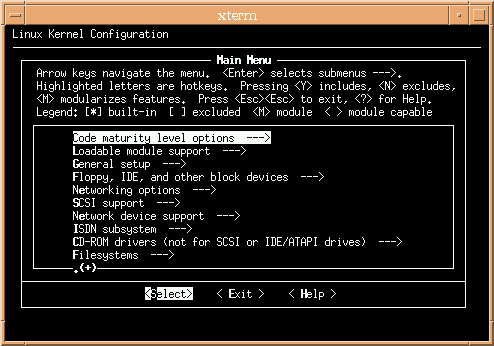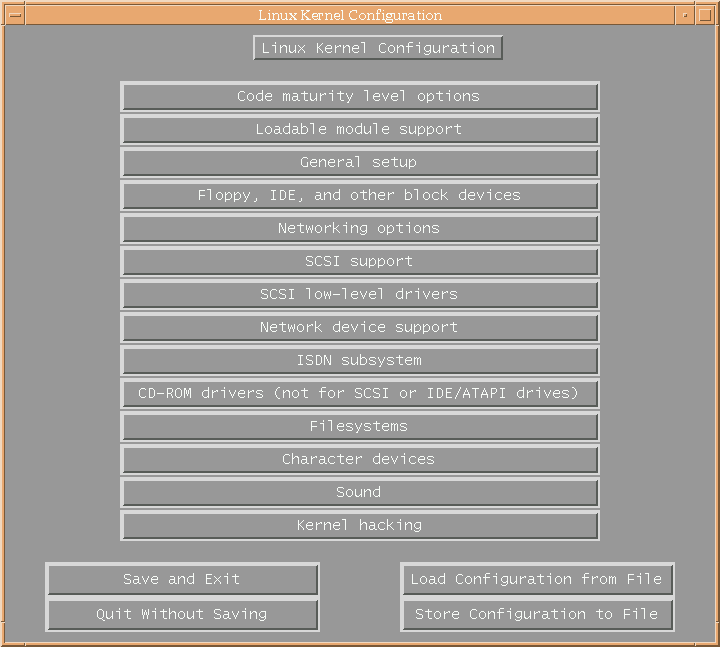
When you move in to a new house you should always make new keys, as is the case with you Linux system.
Read /usr/src/linux/README.
cd /usr/include rm -rf asm linux scsi ln -s /usr/src/linux/include/asm-i386 asm ln -s /usr/src/linux/include/linux linux ln -s /usr/src/linux/include/scsi scsi cd /usr/src/linux make mrproper make config make dep make zImage
When compiling the kernel if you don't understand the option, read help. If you still don't understand the option leave it alone.
make menuconfig

make xconfig

Copy the new kernel to a temporary location on the root filesystem and
update /etc/lilo.conf to test the new kernel image.
boot=/dev/sda3 # where to install lilo map=/boot/map # lilo config file (default) install=/boot/boot.b # lilo config file (default) prompt # ask me which image to boot timeout=50 # only wait for 5 seconds image=/vmlinuz # path to kernel image label=linux # label to identify image root=/dev/sda3 # root filesystem password=goaway # password protect image restricted # only require password if boot options present read-only # initially mount / read-only image=/vmlinuz_newkernel # path to a second image label=linux_test # a unique second label root=/dev/sda3 initrd=/boot/initrd read-only
Update the boot record by running /sbin/lilo -C
/etc/lilo.conf.
Protect the boot password with chmod 600
/etc/lilo.conf.
Last Modified: 13 April 1997
St. Louis Unix Users Group - Linux SIG